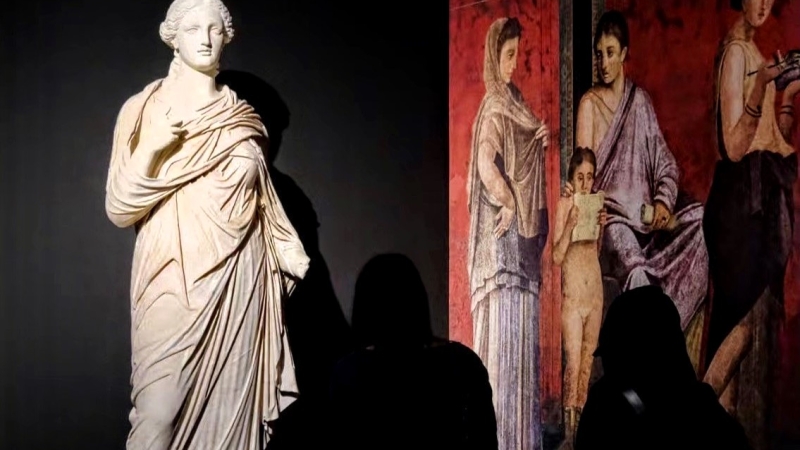Love, Luxury and Beauty in Antiquity is the second project that continues the narrative on western classical culture built in collaboration with the National Archaeological Museum of Naples.
The aim is to build a journey through the theme of beauty and love in the classical age. This theme permeates all of Greek and Roman culture and is brought to life in the story of Pompeii and Herculaneum.
The structure of this tale, through 126 masterpieces preserved in the prestigious Italian museum, is twofold. On the one hand it refers to the poignant history of Pompeii and on the other reflects on the eternal beauty revealed by the archaeological excavations of two iconic sites. In fact, their discoveries were a source of inspiration for generations of artists to come.
The exhibition route winds its way through symbols, myths and gods of classicism around the theme of love and beauty. The story begins with the Villa of the Papyri in Herculaneum and the House of the Faun in Pompeii. Two mythical sites that show us the high level reached by Roman statuary and Greek reference models. The exhibition continues in three other sections, presenting in the itinerary various characters integral to the narrative. These characters include: Aphrodite, Eros and Pothos, symbols of the complexity of love; Dionysus, representative of the joy of life and human energy; Helen and Ganymede, points of contact between the gods and the humans, figures symbolising human beauty.
The narrative closes with an immersive room built around a cast of a Pompeian body, a symbolic representation of the transience of beauty linked to the events of the eruption of Vesuvius and the destruction of Pompeii.
The meaning of this exhibition in collaboration with the National Archaeological Museum in Naples is an invitation to think and understand beauty as the result of a continuous process of redescription. To observe beauty and love as the mirrors of humanity.














